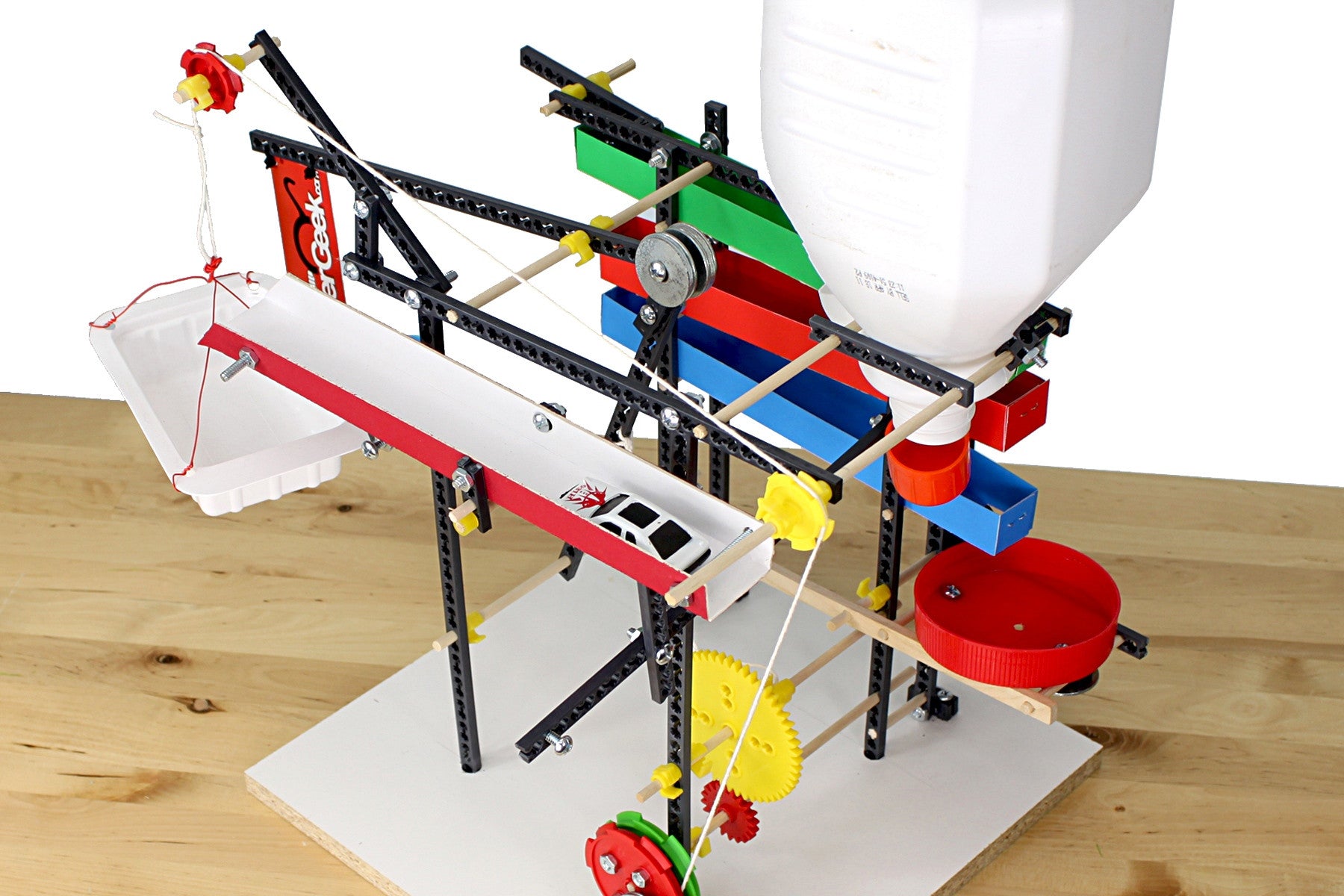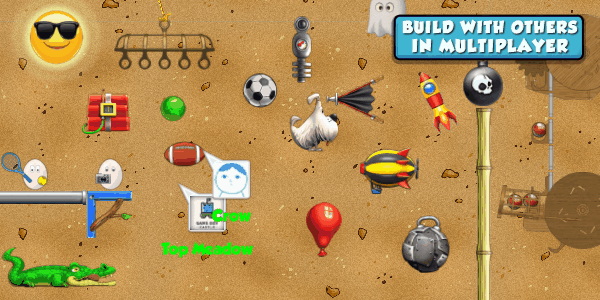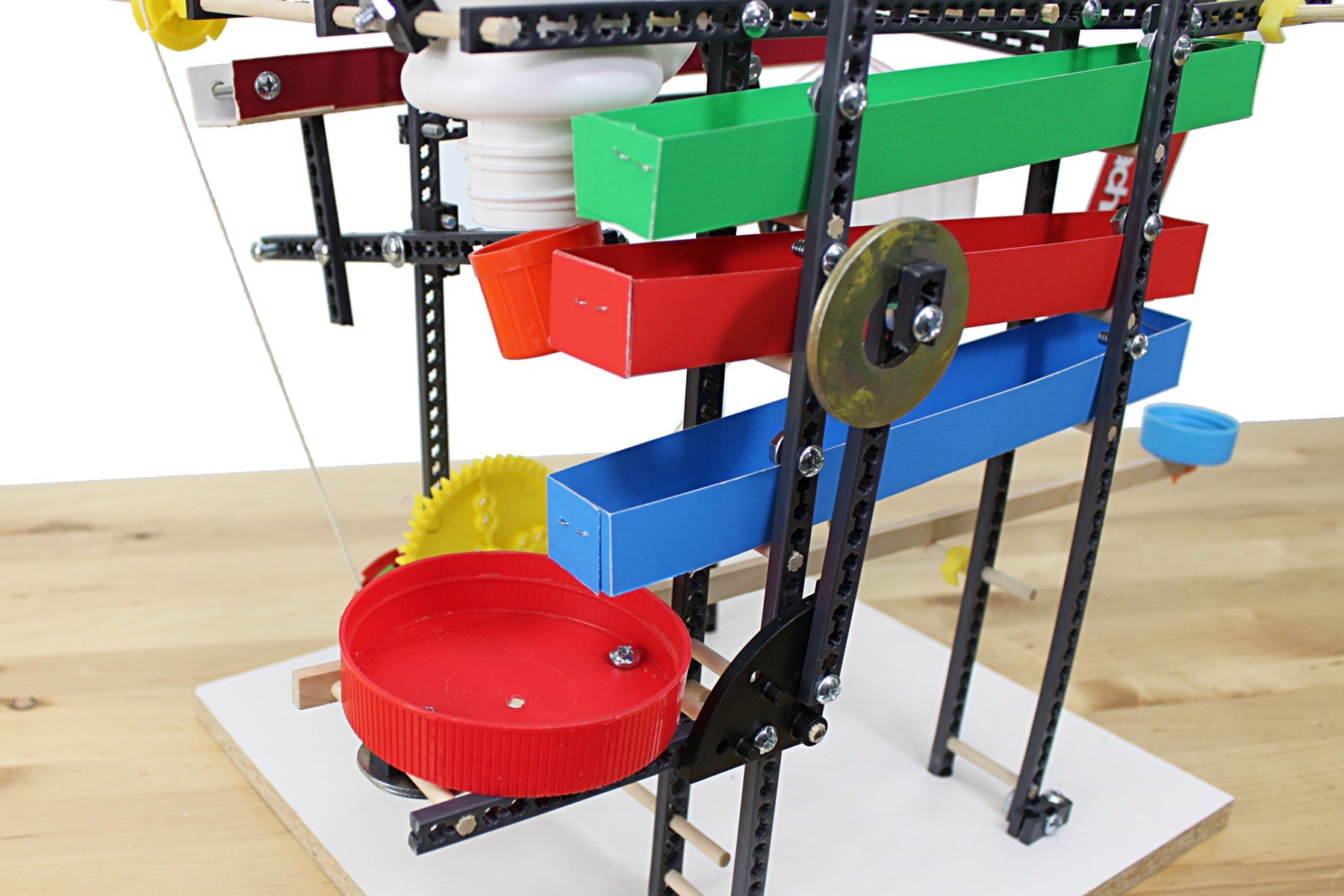
Sometimes you might be tasked with handling live animals like cats and mice who have their own interactions to work with. It’s not all mechanical bits and pieces you’re dealing with, however. The first puzzle of many - they’re gonna get a lot meaner than this. You’ll also make use of a lot of rope and cable, which needs to be strung around the field in various ways to make sure certain objects get tugged or certain other objects like gears are given motion, respectively. A lot of objects also need power to function, which can be provided in various ways – through switches, by wind power offered by windmills, solar power provided by light, and so on. Some objects also need to be paired with others to function – a flashlight won’t do anything if nothing hits its switch, which means it can’t have its light focused through a magnifying glass to light the fuse on that cannon. Generally, they make logical sense – balloons float up, and get popped by sharp things, dynamite explodes if its fuse gets lit, basketballs roll down inclines and bounce up when they fall upon trampolines. There’s a wide assortment of parts to place down, all of which have their own unique functions.

Certain parts can also be rotated, which you’ll have to do plenty of to solve most of the puzzles. To do this, you’re given a certain set of parts that can be placed onto the field as you like, provided they don’t overlap something already on the field. More specifically, you might be asked to pop every balloon on the field, make sure a mouse reaches a certain part of the field, or switch on a light bulb.

You’re presented with a simple task – usually involving making sure a certain thing goes in a certain place, activating one or more objects, or destroying certain objects. Why? Well, that’s why you bought the game, isn’t it? Some of the puzzles have briefings giving the flimsiest of excuses on why you’re doing the things you do, but even that’s honestly more than what the game needs.Įach puzzle follows the same format – you’re presented with a field with various walls, objects, and other features placed across it. There’s absolutely no plot to get in the way – there are puzzles to solve, 87, to be exact. That, and it holds up a lot longer than your average Super Solvers game. Perhaps, at least, you could make the somewhat flimsy argument it teaches kids “creativity” and “problem solving skills”. Truth be told, it’s not really all that educational, given the sometimes strange physics and the general wackiness of the concept. It’s also highly likely to be the first many people grew up with, given that more than a few schools had copies of their own. (Just look at Lemmings, for example.) Because of this, it’s not really difficult to call any game but the latest the “best”, unless you particularly prefer the look of an earlier game.Īside from a few questionable design decisions that’d be ironed out in future games, the original title makes just as fine of a start as any to dip into the series.
CONTRAPTION MAKER PACKING UP SERIES
It works out – when a series about solving puzzles makes a drastic change, you’re more likely to turn off fans rather than get new ones. If you play one, however, you’re more or less ready to tackle all of them. New puzzles come by the dozens, a handful of new features are slotted in, and new parts become part of the myriad of machines. While there have been plenty of imitators, few, if any, really quite match it for various reasons.ĭespite getting several sequels, the main gameplay of the series never really drastically changes. It’s this series in particular that really popularized the concept, however, along with more than a few sequels along the way. Creative Contraptions, released in 1985, is a very similar idea, albeit in a very early form. Such a concept makes for a great idea for a puzzle game, and the series is far from the first. This is what we know as the “Rube Goldberg machine”, so named after the cartoonist best known for his drawings involving simple tasks being performed by highly impractical machines.

Incredible Machine, The / The Even More Incredible MachineĪ staple of any fine comedy - the incredibly complicated machine made of all kinds of wacky parts that somehow shouldn’t work at all, and yet is capable of performing some simple task in a convoluted fashion.


 0 kommentar(er)
0 kommentar(er)
